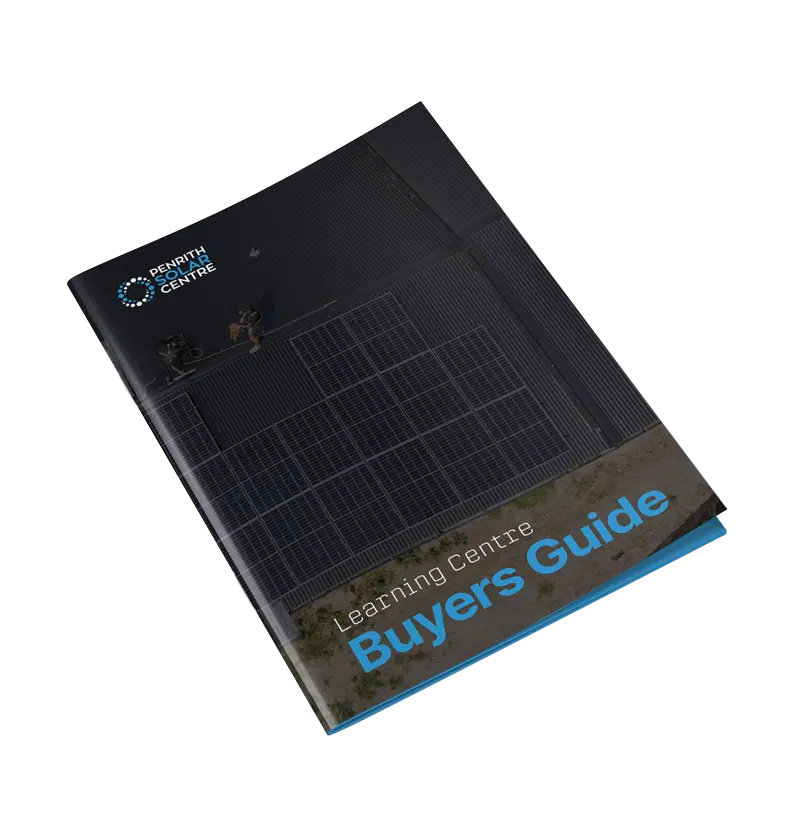How long will a Tesla Powerwall 2 last? This is a very common question, one that we come up against on a regular basis. You’re spending some hard-earned bread on a solar battery; you’ll want to know how long it will be useful. There are a few technical considerations, but the long answer shortened is… it depends.
I’m not trying to avoid answering the question and I’m definitely not trying to be cute (if I were trying to be cute, you’d know it). No one wants to hear that there’s wiggle room when asking about something that should, realistically, have a concrete answer.
There are a variety of factors that come into consideration when determining the life of your Powerwall 2. Don’t fret, you’ve come to the right place for a frank and open discussion of the Powerwall’s lifecycle.
At Penrith Solar Centre, we install two brands of solar batteries, and the Tesla is one of them. We know Powerwalls inside and out, but it is hard for us to summarise their lifespan for you with a quick statistic.
Because we value your time and want you to be an informed shopper, you’re going to get an unbiased and comprehensive look at what determines the life expectancy of Powerwall. In this article, you’re going to learn about the following:
- What is a Tesla Powerwall 2?
- What Determines the Lifespan of a Powerwall 2?
- How Do You Know When It’s Time to Replace a Powerwall 2?
By the end of this article, you’ll have all your Powerwall lifespan questions answered.
What Is A Tesla Powerwall 2?
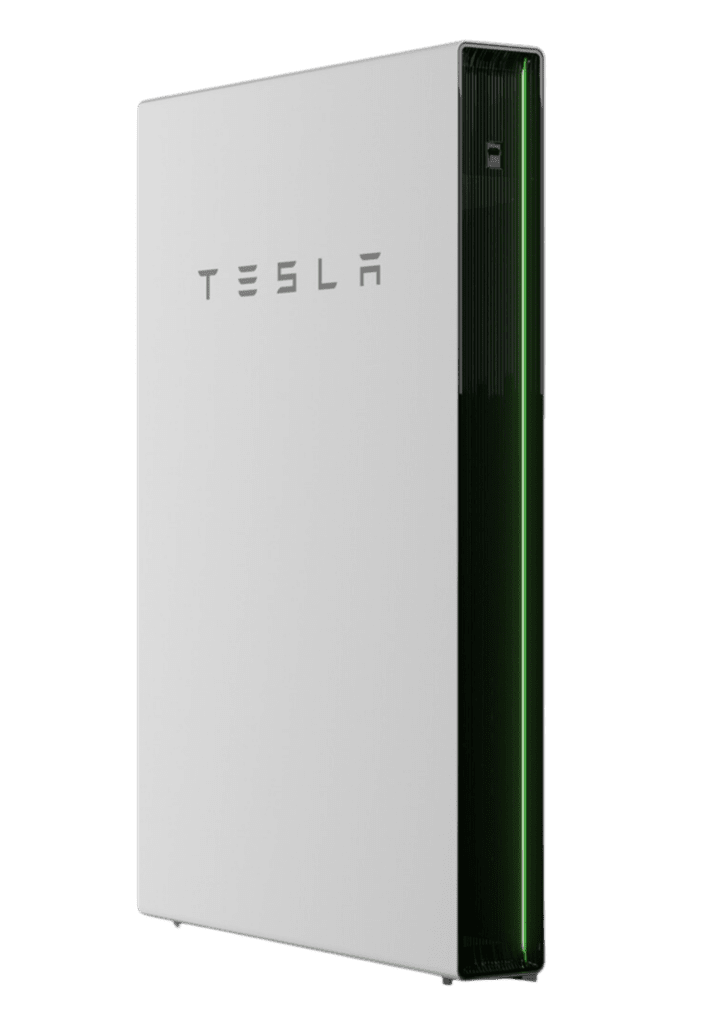
Tesla Energy is an American corporation known for its work in electric vehicle research and production. It boosted its corporate mission in creating sustainable energy solutions in 2015 with the release of its first solar battery, the Powerwall 1. The Powerwall 2 came out a year later. There have been a series of refinements and enhancements over the past six years as the product was fine-tuned.
The specs for the Powerwall 2 are as follows:
- Energy Capacity: 13.5kWh
- Continuous Power Rating: 5kW
- Peak Power Rating: 7kW
- Round-trip Efficiency: 90%
- Dimensions: 1150 mm x 753 mm x 147 mm
- Weight: 114 kg
One of the reasons it’s a popular choice as a solar battery for homes and businesses is because it’s compatible with any solar system. It’s the ideal choice for a shopper who’s looking to add a solar battery to an existing solar system, whether it’s a central inverter system, a microinverter system, or a central inverter system with DC optimisers.
For more detailed information beyond this summary of what a Powerwall 2 is, we recommend you check out this review of the Powerwall that we’ve done. Please feel free to check it out for more information on the specs and features of the battery and come back here after you’ve read a bit more!
Click here for solar solutions
What Determines The Lifespan Of A Powerwall 2?
Temperature Considerations: Just like people, batteries don’t work very well when they are exposed to really hot or really cold temperatures. Their perfect temperature range is around what we find comfortable, usually between 20 to 25ºC.
But in many parts of Australia, where the weather can change rapidly, solar batteries can be affected. The Powerwall will last longer if it’s installed under shading or if you keep it in a temperature-controlled spot, like a garage.
When a battery gets too hot or too cold, it starts to have chemical reactions inside it that make its parts wear out faster. This makes it lose storage capacity quicker, which means it won’t last as long overall.
Even though cold weather isn’t a big problem in Australia (except maybe in Tasmania), it can still hurt a battery if it happens often. Being really cold for a long time can make the battery work less efficiently and make it wear out faster over time.
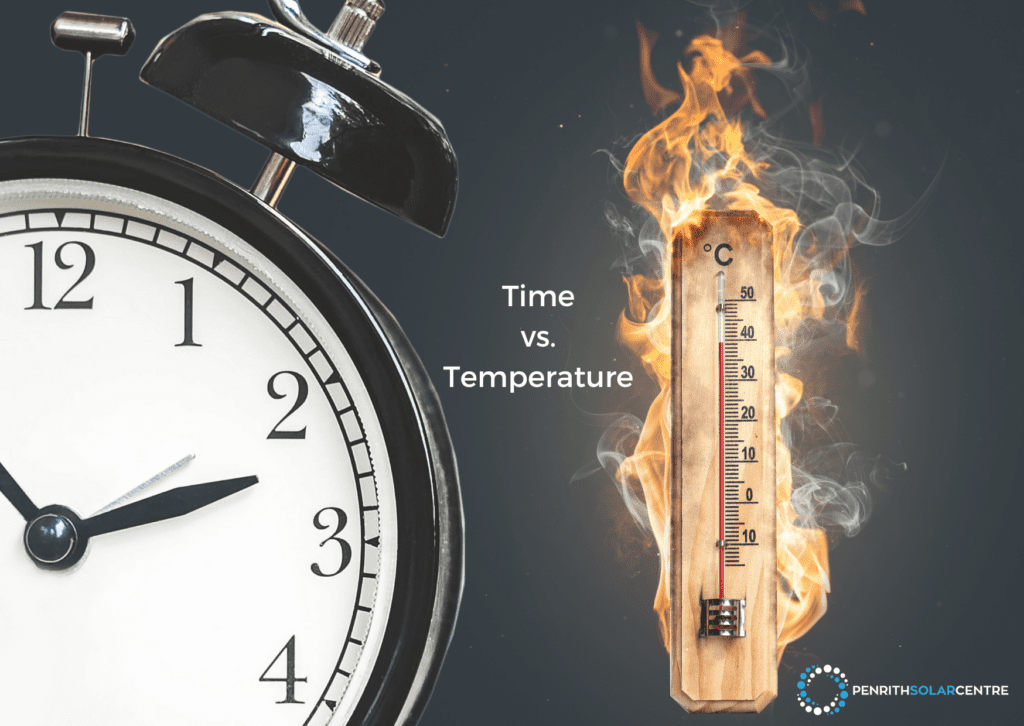
Number of Charge and Discharge Cycles: If your Powerwall 2 goes through cycles more often, it’s going to wear out quickly compared to a battery that only fully cycles once a day. A cycle, in this context, is when a battery fully charges and discharges, which means it gets filled with electricity fully and releases it all until it has reached the programmed threshold or until it’s empty.
Powerwall 2 is a type of lithium-ion battery, and these batteries can handle more cycles and deeper discharges without getting damaged. But no matter what kind of battery you have, you can make it last longer by not using it too much and being smart about how you manage your energy.
It’s not random that many warranties from manufacturers are connected to how many times a solar battery gets charged and discharged during its life. Every time it goes through a cycle, it wears out a minuscule amount and goes through chemical changes that will eventually put stress on the chemical composition of the battery. This will, over a very long period of time, make it hold less energy.
Depth of Discharge: The Depth of Discharge (DoD) is a measure of how much of a battery is used relative to its total capacity.

When companies make batteries, they often have guidelines and suggestions about the Depth of Discharge. You can reference this information to program the battery using the Tesla app on your Apple or Android device. You will be able to tell the Powerwall when to recharge – leaving some energy in reserve or depleting the whole thing. The DoD for the Powerwall 2 is 100%.
Please note that running your Powerwall all the way to empty will decrease the lifespan of your battery. It’s also a risk for you: what if there’s a blackout and you need some energy in reserve? It’s a good idea to always keep a minimum amount of energy in your Powerwall to preserve the life of your battery and protect you during blackouts.
What Are Your Energy Consumption Patterns and Needs? Your energy needs should always be the focus when you’re looking into the lifespan of a Tesla Powerwall. Your battery will behave differently from your next-door neighbours, and your energy usage patterns will affect the lifespan of your solar battery.
- When are you home? Is the sun up?
- What are you powering? Is it summertime? Do you have an air conditioner?
- How many people are in your home and what are their habits?
There are quite a few factors that affect your usage patterns. These factors will affect how often your solar battery charges and discharges and how efficiently it performs.
If you’re interested in learning a bit more about the importance of monitoring and programming your energy, you might want to check out the following article titled, What is Consumption Monitoring?
How Do You Know When It’s Time To Replace The Tesla Powerwall 2?
I know you’re going to love the answer to that question: it depends. And I’m still not trying to be cute (trust me, you’d know it if I were trying).
Solar batteries all have life cycles. As they age, they will degrade, usually slowly. With time, they will hold less energy and their performance will diminish. Eventually, they will need to be replaced. It’s the circle of life. Just you try to read that sentence without singing it in your head.
An off-grid system, one not connected to a local power company, is often used in places where homes or businesses are far from cities. These types of solar system setups are the main source of energy for folks in remote areas. You’ll notice it when the battery in an off-grid system gets old. It stops working. You would notice it if the sun dimmed, or the daylight hours shortened. There simply won’t be enough energy for your needs anymore. When that happens, it’ll be time to get a new battery.
When a Powerwall starts to degrade and degrade some more and passes its warranty expiration, there actually are some functions that can continue. A battery with limited storage capacity, let’s say 42%, can still be of use during a blackout. Certainly not as much use, but some use just the same.
A good way to estimate how long your solar battery will last is by looking at the warranty the manufacturer gives you. The Tesla Powerwall 2 has a great warranty. It is warrantied for 37.8MWh (megawatt hours) which is 37,800kWh, or ten years – whichever comes first. Because of the naturally occurring battery degradation, the warranty at the end of ten years is for 70% of its original storage capacity. The warranty for the Powerwall is also allowed an unlimited number of cycles, unlike the warranty for Enphase.
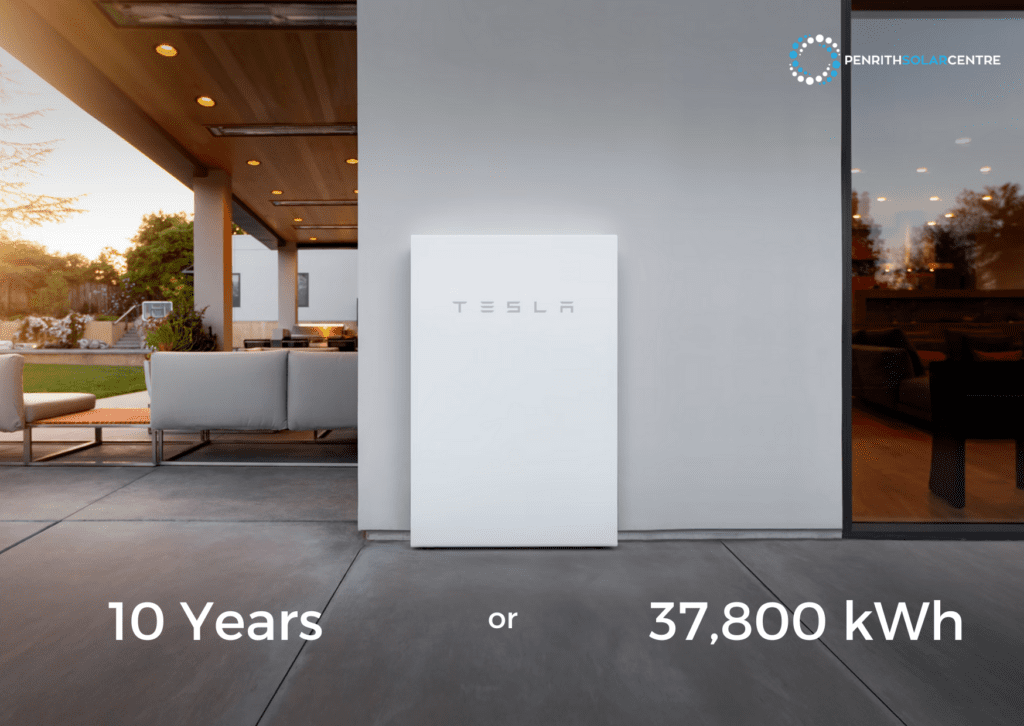
There is something else related to how long the warranty for Tesla batteries will be that we need to mention: VPPs (virtual power plants). A VPP is a system where a company, a VVP, sets up a network to use participants’ solar batteries to redistribute electricity at different times of day or night.
When you buy a Powerwall 2, you are given the option to sign up for the Tesla VPP in New South Wales and if you do, the warranty is extended to 15 years (Please note: that’s only for the Tesla VPP, not any of the others).
They do this to incentivise customers to sign up for the VPP. Also, the Tesla VPP offers a $1,000 subsidy on the purchase of a battery for new owners. If you already own a Powerwall, there’s a $100 credit and an additional $220 of grid support credits (which are normally earned annually) when you sign up.
The VPP controls the solar batteries of participants during periods of high demand for electricity when prices are higher (evening and nighttime), releasing their stored energy to relieve the grid. When the demand for electricity is lower, midday for instance, the VPP directs the connected batteries to charge.
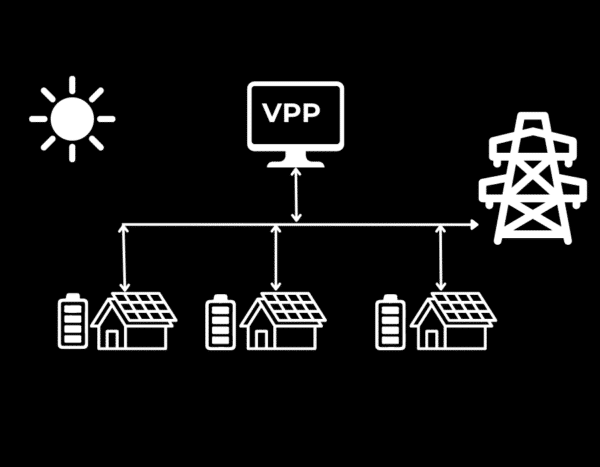
Essentially, when you participate in a virtual power plant, you relinquish control of your battery to a third party. In return, you receive benefits like an initial reduction in battery costs, a more generous solar feed-in tariff, or a combination of both. In some cases, they will pay you a premium per kWh, and all you’ve done is store it for a period of time and give it right back to the grid.
While this sounds like a pretty good deal, and for some solar battery owners it really is, the VPP will increase the charge and discharge cycles your battery goes through daily. For most residential solar battery systems, the battery charges and discharges completely once a day. If you’re signed up for a VPP and reap the financial benefits of it, your battery — under the control of the VPP — will go through more complete cycles. The Tesla VPP will do this fifty times in a year. This causes it to degrade faster.
When a solar battery nears the end of its life, there are warning signs. They determined by the battery’s chemistry, design, and how it was used. While solar panels continue working in peak condition for over 30 years, the lifespan of a Powerwall 2 is around 10 – 15 years. Here are some common indications that you need to replace a Tesla Powerwall in your home or business. Be sure to keep an eye out for these signs:
Reduced Energy Capacity: One of the key signs of an aging solar battery is a decrease in its ability to hold energy, as mentioned earlier. You might observe that it can’t store as much energy as it used to, leading to shorter periods of energy use.
More Frequent Recharging: Over time, as the battery’s capacity decreases, it may require more frequent recharging to keep up its previous performance level. This recharge can come from solar panels or the power grid.
Increased Heat Generation: As batteries get older, they might generate more heat when they charge and discharge. If you see that the battery becomes very hot during regular use, this could be a sign that it’s degrading.
Unplanned Shutdowns: When a battery is close to the end of its life, it might unexpectedly shut down. This can be especially noticeable during times when you need a lot of electricity, and the battery struggles to provide enough.
Battery Management System (BMS) Alerts: Many solar batteries include a Battery Management System (BMS) that watches over the battery’s health. If the BMS repeatedly sends alerts about issues with the battery, it could mean that the battery is nearing the end of its useful life.
If you keep an eye on your Tesla Powerwall 2, you can detect most of these signs pretty early on in the degradation of the battery. Sometimes it just needs a little maintenance, but sometimes it’s an early signal to get a replacement.
If you’re interested in learning a bit more about VPPs, you might want to check out the following article titled, What is a Virtual Power Plant (VPP)?
To Cell the Truth, Your Tesla Powerwall 2 Will Last a Long Time
By now, you should be well informed about the lifespan of a Tesla Powerwall, a battery solution more versatile than David Bowie’s discography (excluding Heathen, of course. That’s just terrible). When properly cared for, the Powerwall can keep powering your home or business (albeit in a limited capacity as the years roll on) long past its estimated degradation.
At Penrith Solar Centre, we work with you to find the best energy storage solutions for your home or business, which includes helping you understand how long you can depend on your Powerwall. Like David Bowie finishing Blackstar, you can count on us to see things through to the end – whether it’s the final high note of an accomplished performer or the lifespan of your battery.
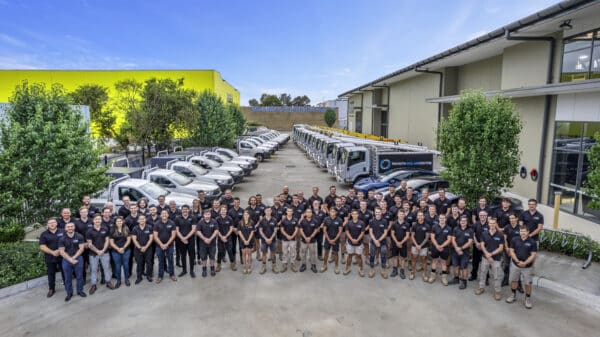
If you’re interested in learning a bit more about the cost of a Powerwall, you might want to check out the following article titled, How Much Does a Tesla Powerwall 2 Cost?
